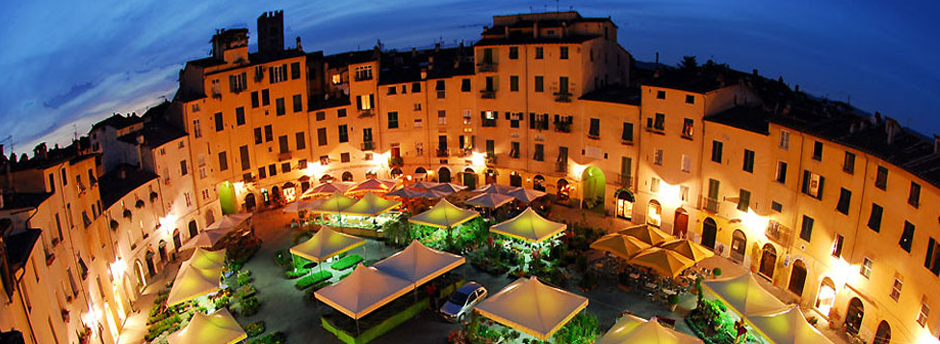The Roman amphitheater, now about three meters underground, was built outside the walls in the 1st or 2nd century AD. Elliptical in shape, it had on the outside two superimposed orders of fifty-five arches on pillars that supported the cavea, formed in its vault by twenty steps and capable of ten thousand spectators.
The building, which fell into ruin during the barbarian invasions, became for centuries a sort of quarry for building materials: it is no coincidence that during the Middle Ages it was referred to as “caves”. In particular, the entire cladding and all the columns were stripped. Subsequently, houses and buildings began to be superimposed on the remaining ruins which, using the remaining structures of the Amphitheater, perfectly preserved their shape.
The current splendid square, singular and unique of its kind, was built by the architect Nottolini (from 1830) who had some buildings built in the center demolished and created the street known as the Amphitheater around it.

